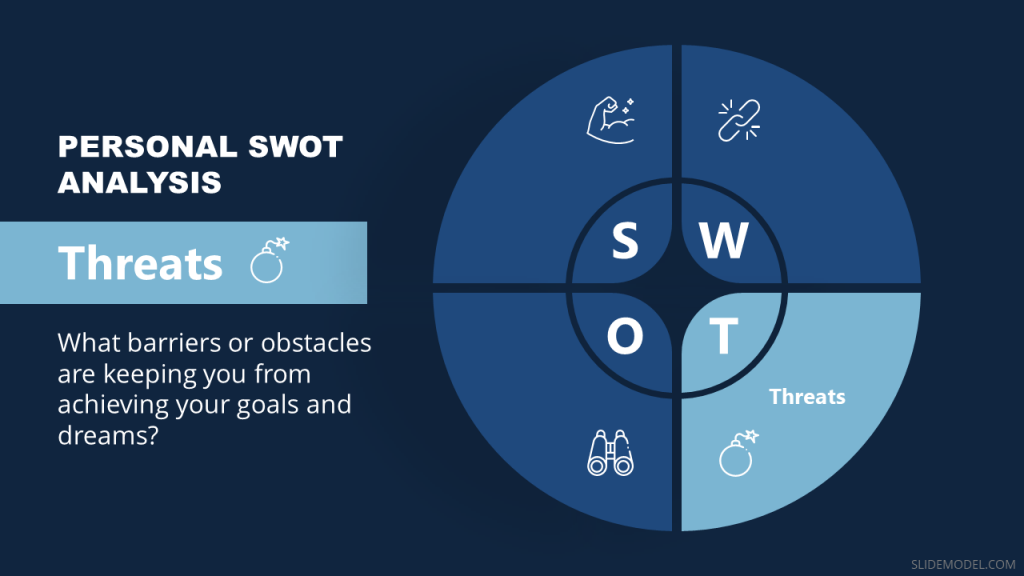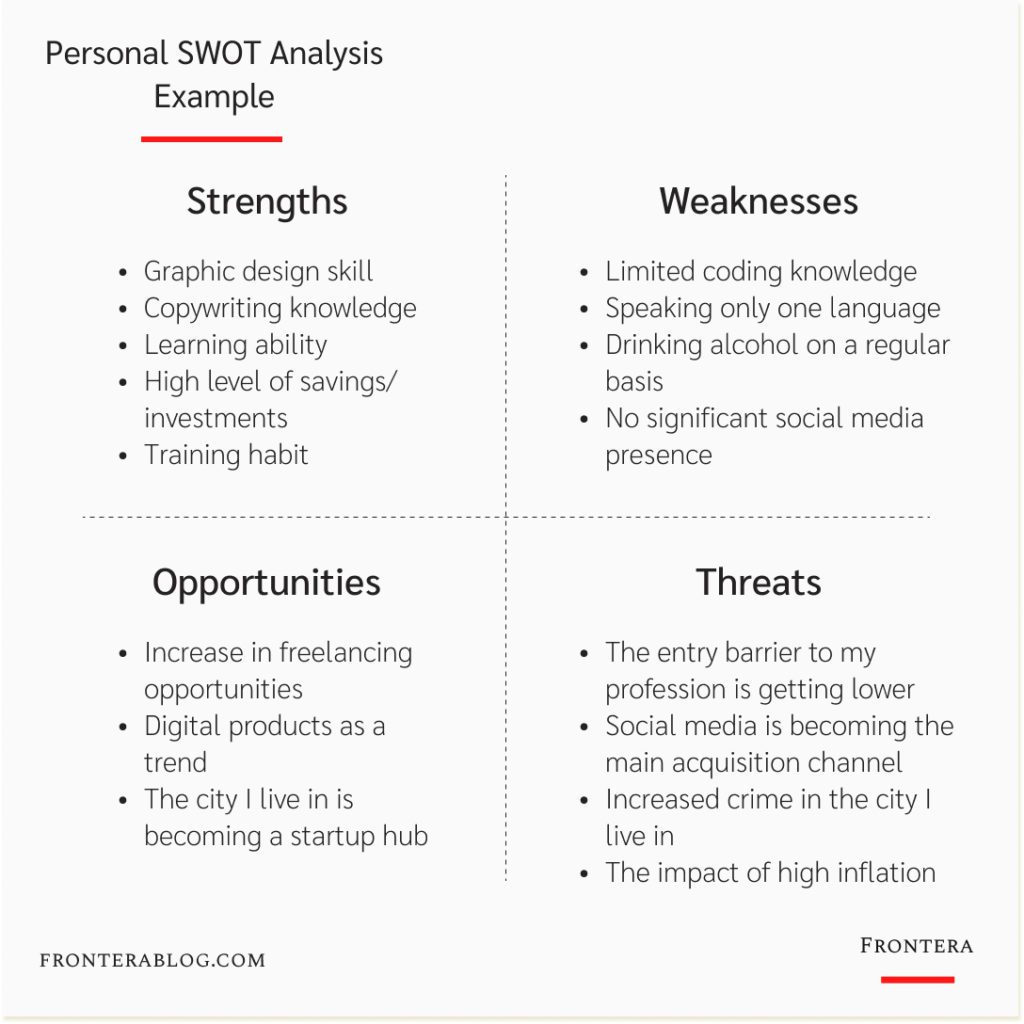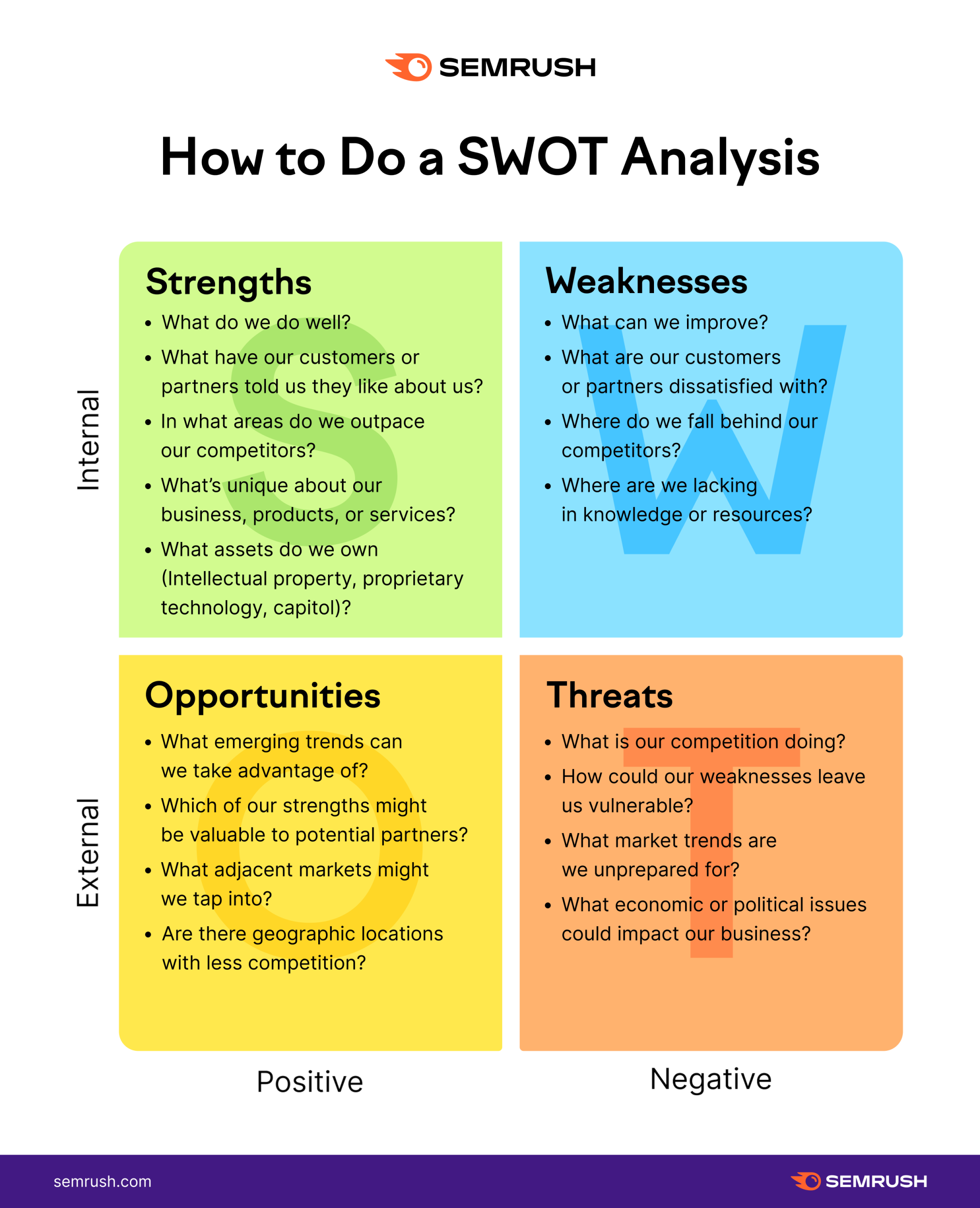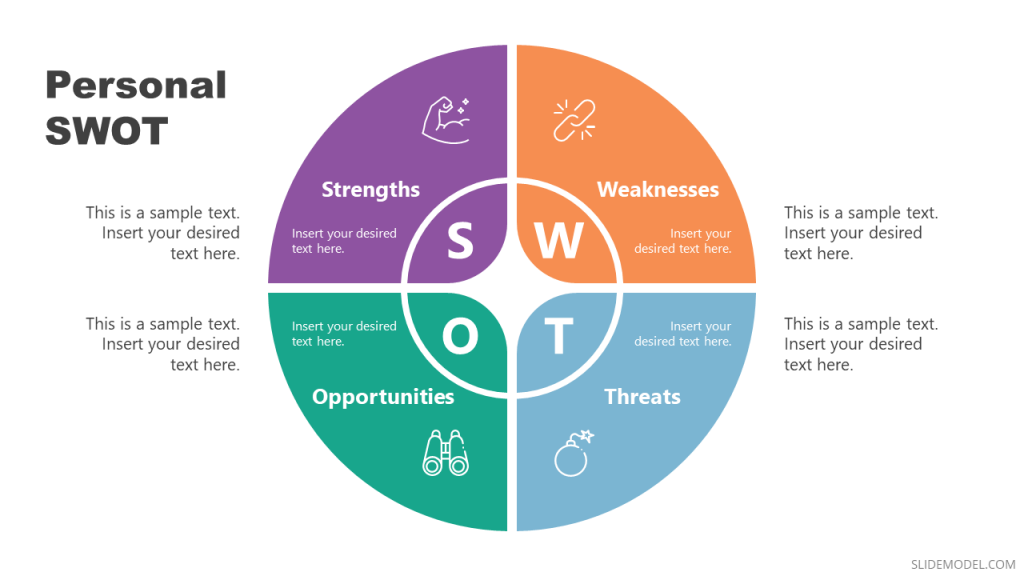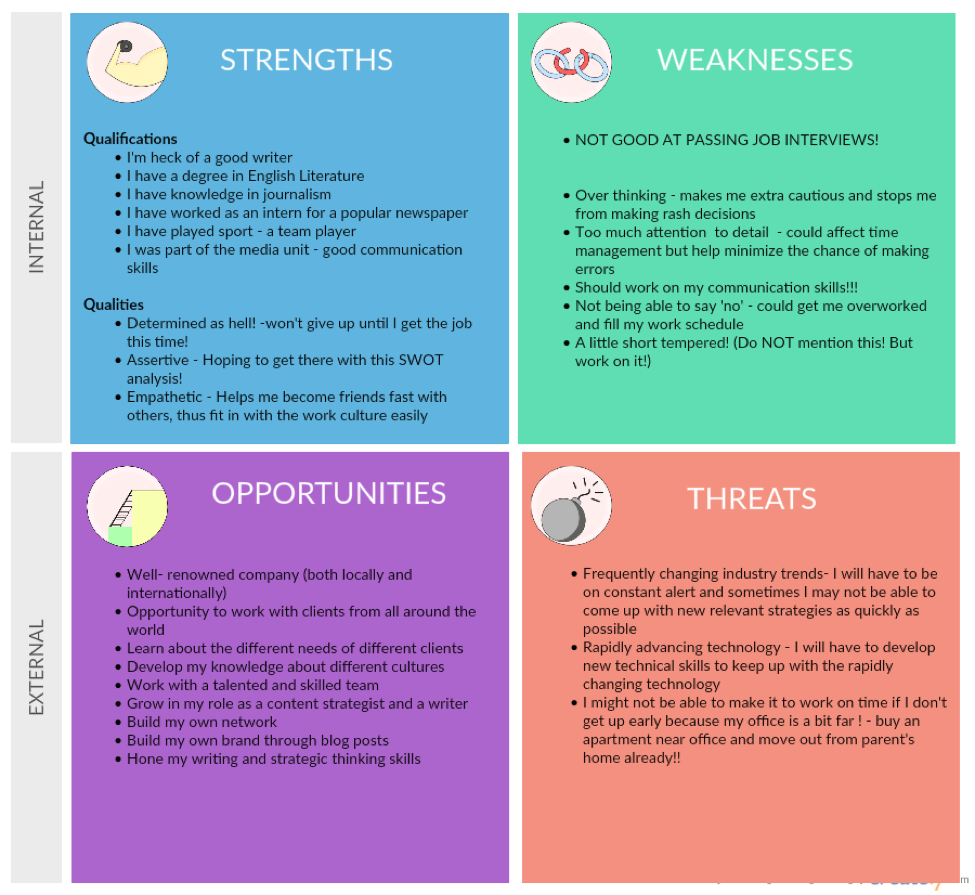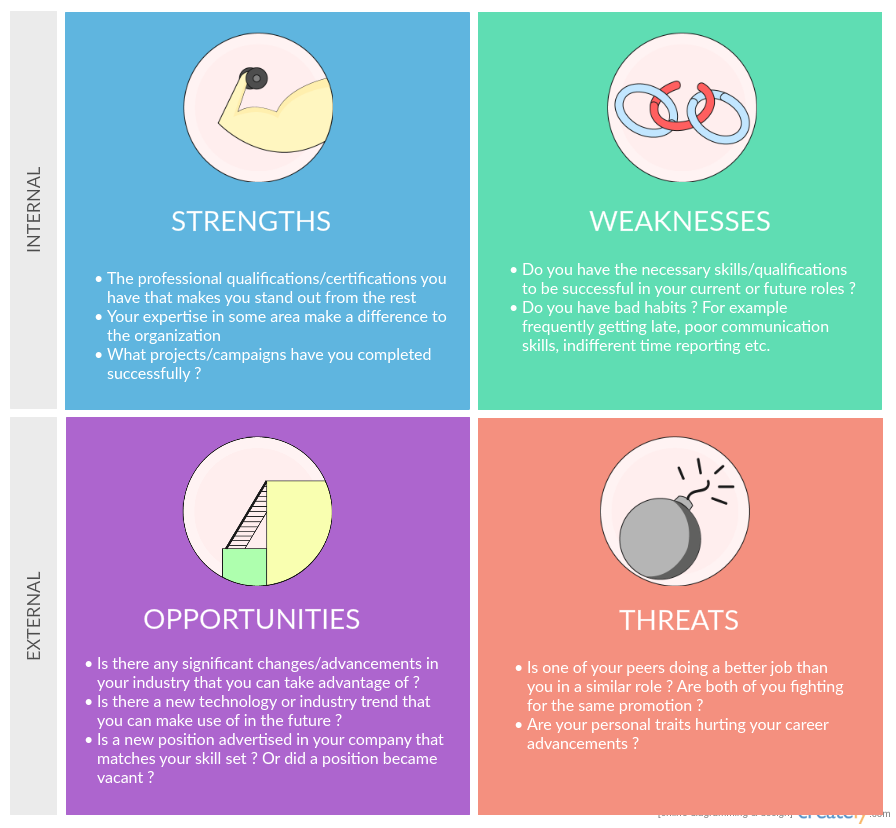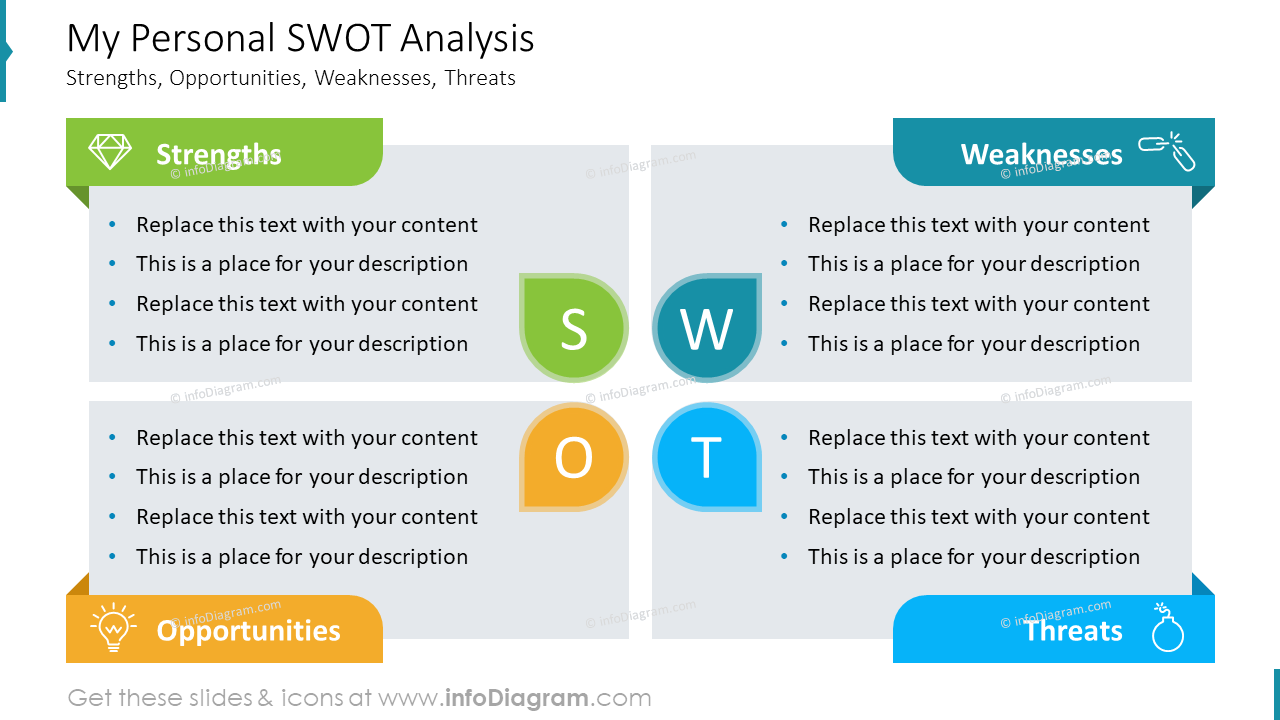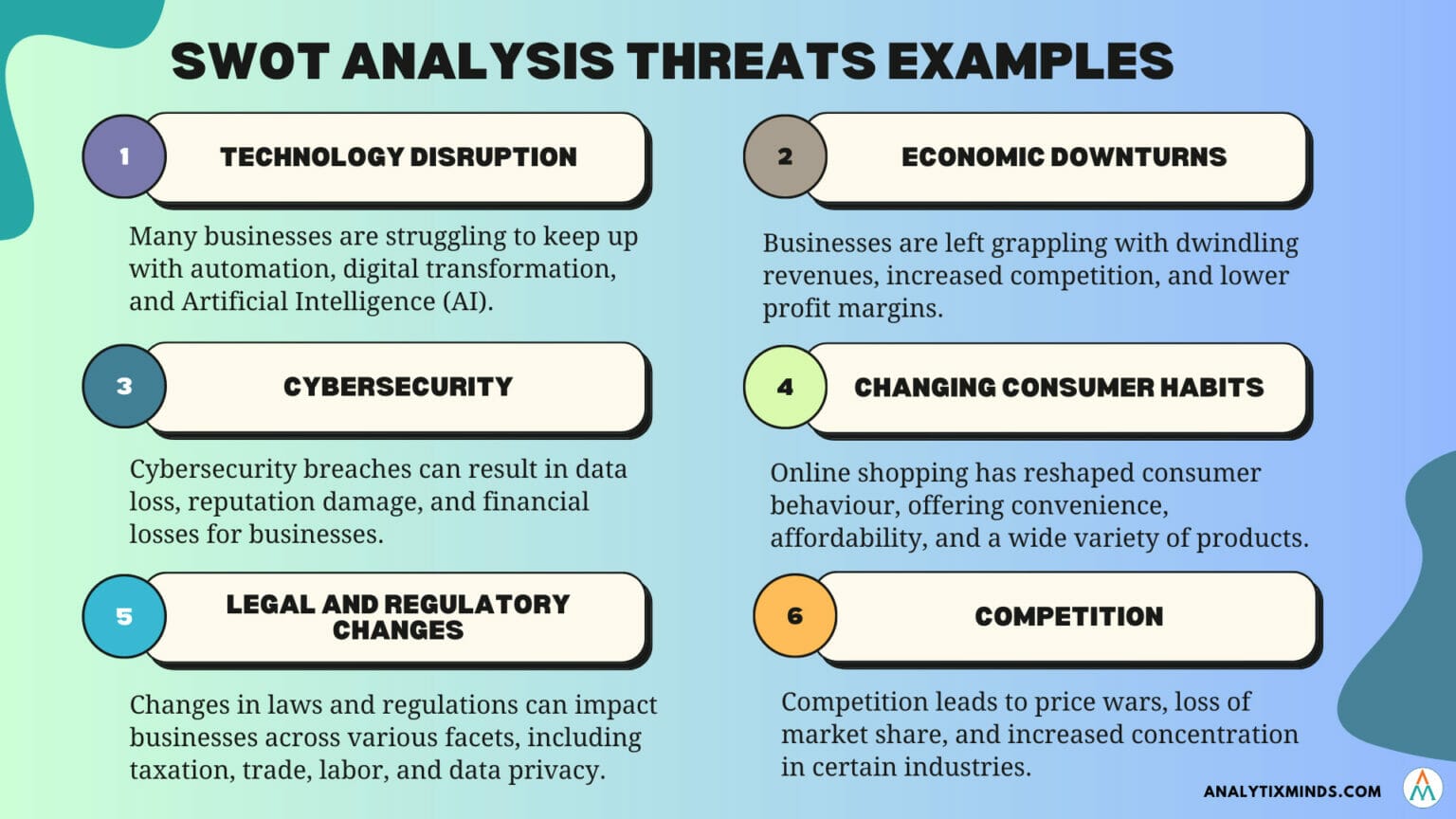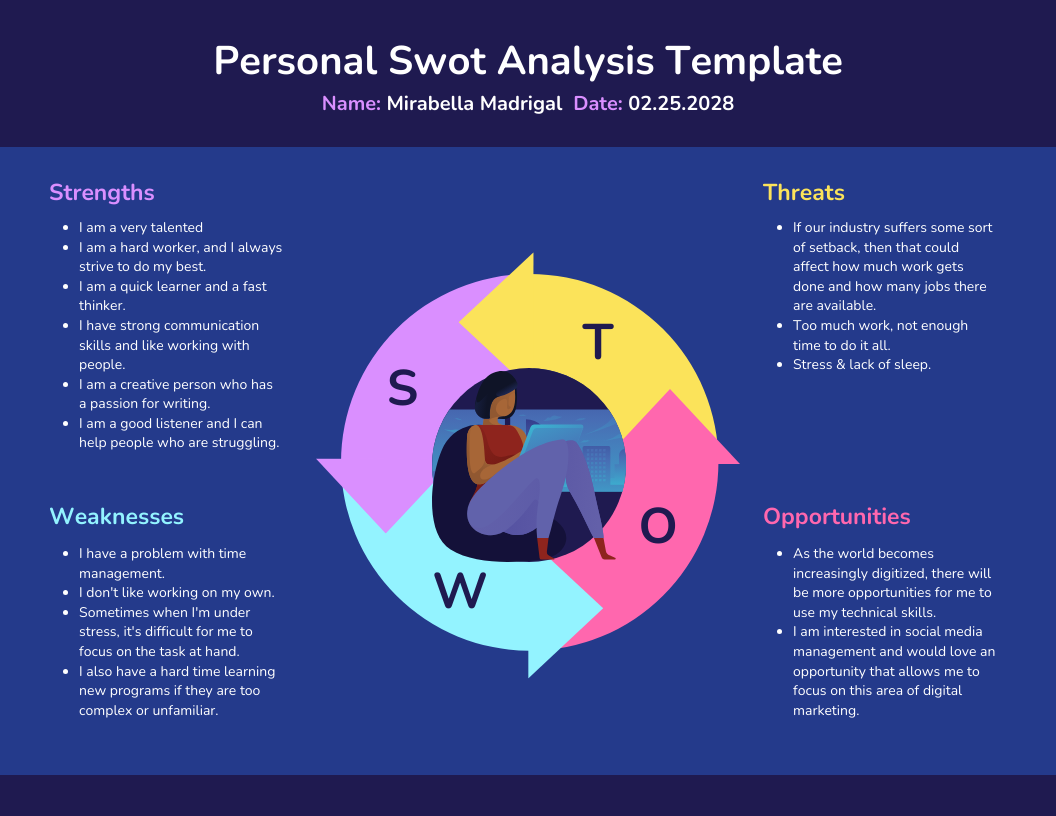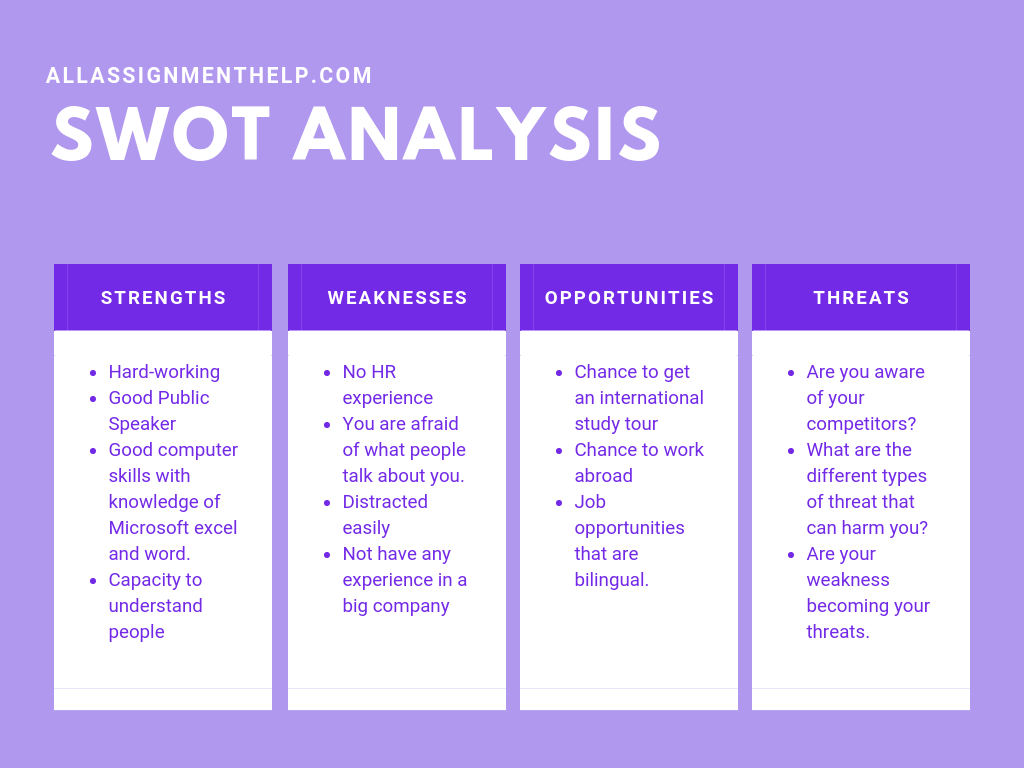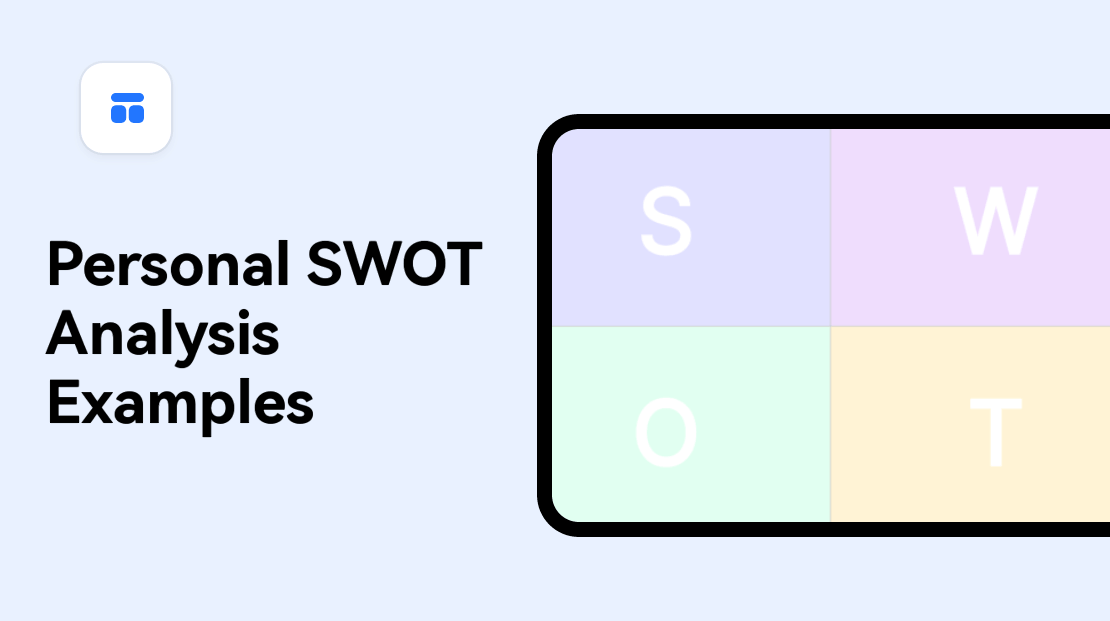Examples Of Threats In Personal Swot Analysis
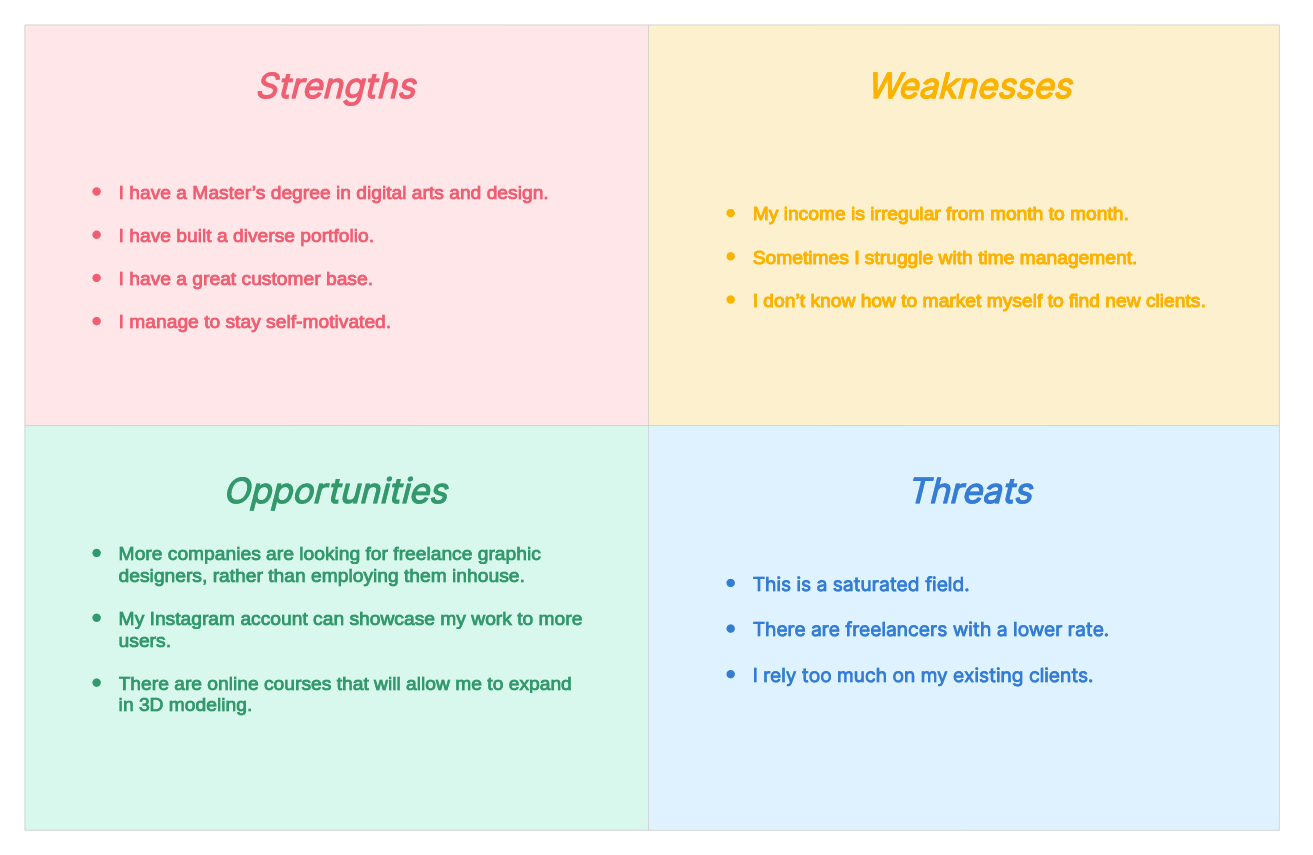
Personal SWOT analysis, a popular tool for self-assessment and strategic planning, helps individuals identify their Strengths, Weaknesses, Opportunities, and Threats. While strengths and opportunities are often readily apparent, identifying potential threats requires careful consideration and realistic appraisal. Misunderstanding or overlooking threats can lead to ineffective planning and hinder personal or professional growth.
This article will explore concrete examples of threats commonly encountered in personal SWOT analyses, providing a framework for individuals to better anticipate and mitigate potential challenges. Understanding these threats is crucial for developing robust strategies to achieve personal and professional goals.
External Threats: Beyond Your Control
External threats are factors outside of an individual's control that can negatively impact their progress. These threats often stem from the broader environment, including economic, social, technological, or political changes.
Economic Downturns
A significant threat, especially for those in economically sensitive fields, is an economic downturn. This could lead to job losses, reduced income, and diminished career prospects. An individual working in real estate, for example, might face decreased sales and commissions during a recession.
Technological Advancements
Rapid technological advancements can render existing skills obsolete, creating a substantial threat. Consider a graphic designer who relies solely on outdated software; their skills may become less valuable compared to designers proficient in newer, more efficient programs. Continuous learning and adaptation are critical in such scenarios.
Increased Competition
A surge in competition within a specific field or industry represents another prevalent threat. This could manifest as an increase in the number of qualified candidates applying for similar positions, or the emergence of new businesses offering comparable services. Individuals need to differentiate themselves to remain competitive.
Changes in Industry Regulations
New or changing regulations within an industry can also pose a significant threat. For example, stricter environmental regulations might require a small business owner to invest in costly upgrades or face penalties. Staying informed and compliant is crucial in such cases.
Internal Threats: Areas for Improvement
Internal threats are weaknesses or limitations within an individual's control that can hinder their progress. These often relate to skills, knowledge, or personal attributes.
Lack of Specific Skills
A common internal threat is the absence of a critical skill needed for career advancement or personal development. For instance, someone aspiring to a leadership role might lack effective communication skills. Addressing this skills gap through training and practice is essential.
Procrastination and Poor Time Management
Procrastination and ineffective time management can significantly hinder productivity and progress. These habits can lead to missed deadlines, incomplete projects, and increased stress. Implementing time management techniques and strategies can help mitigate this threat.
Limited Networking
A small or inactive professional network can limit access to opportunities and valuable information. Networking provides individuals with connections, insights, and support that can be invaluable in achieving their goals. Actively building and maintaining a professional network is important.
Lack of Confidence
Self-doubt and a lack of confidence can prevent individuals from pursuing opportunities or taking risks. This can lead to missed chances for growth and advancement. Building self-esteem and developing a positive mindset are crucial for overcoming this internal threat.
Mitigating Threats: Turning Challenges into Opportunities
Identifying threats is only the first step. The key is to develop strategies to mitigate or overcome these challenges. This might involve acquiring new skills, adapting to changing circumstances, or seeking support from mentors or colleagues.
By proactively addressing potential threats, individuals can minimize their negative impact and increase their chances of success. A well-executed SWOT analysis, including a thorough assessment of potential threats, is a valuable tool for personal and professional development.
Ultimately, the value of a personal SWOT analysis lies in its ability to empower individuals to make informed decisions and take proactive steps towards achieving their goals. Recognizing and mitigating potential threats is an integral part of this process.


